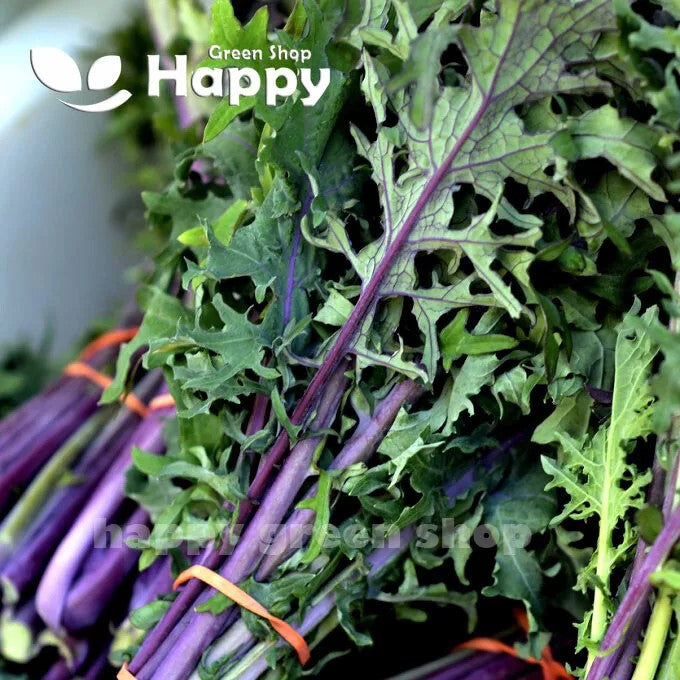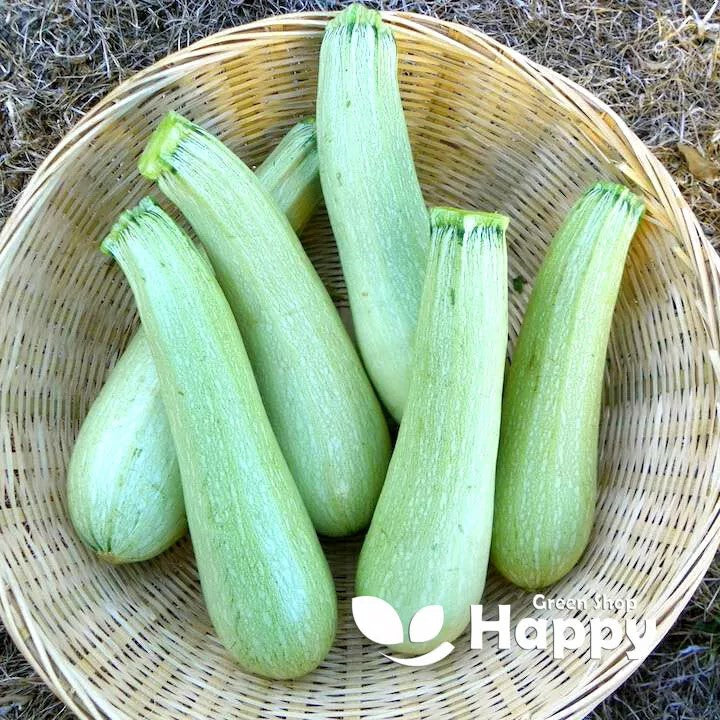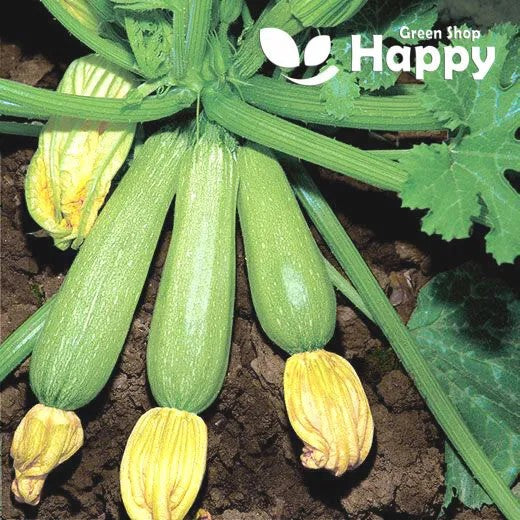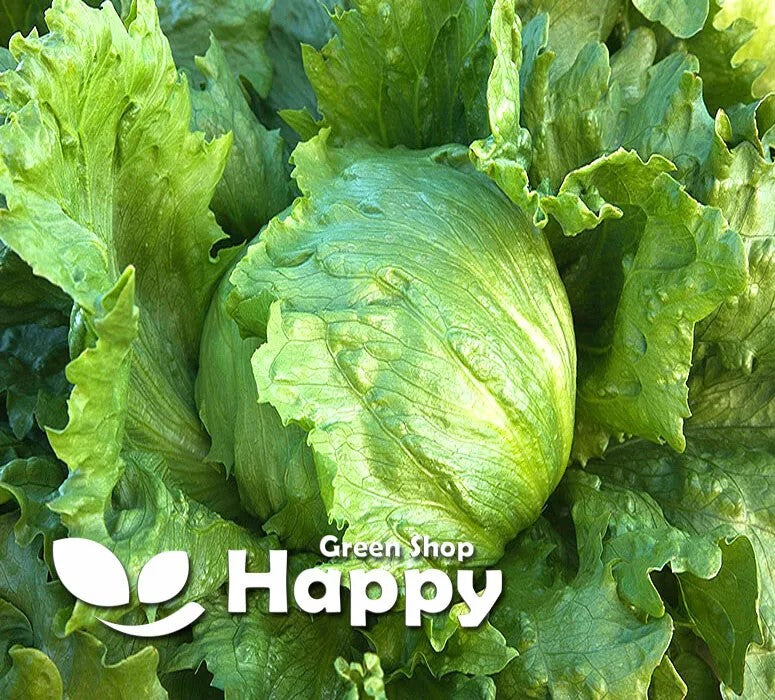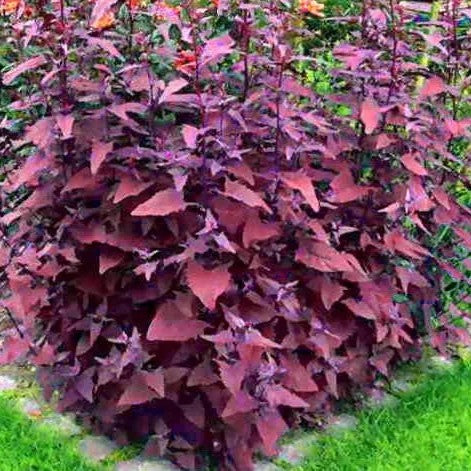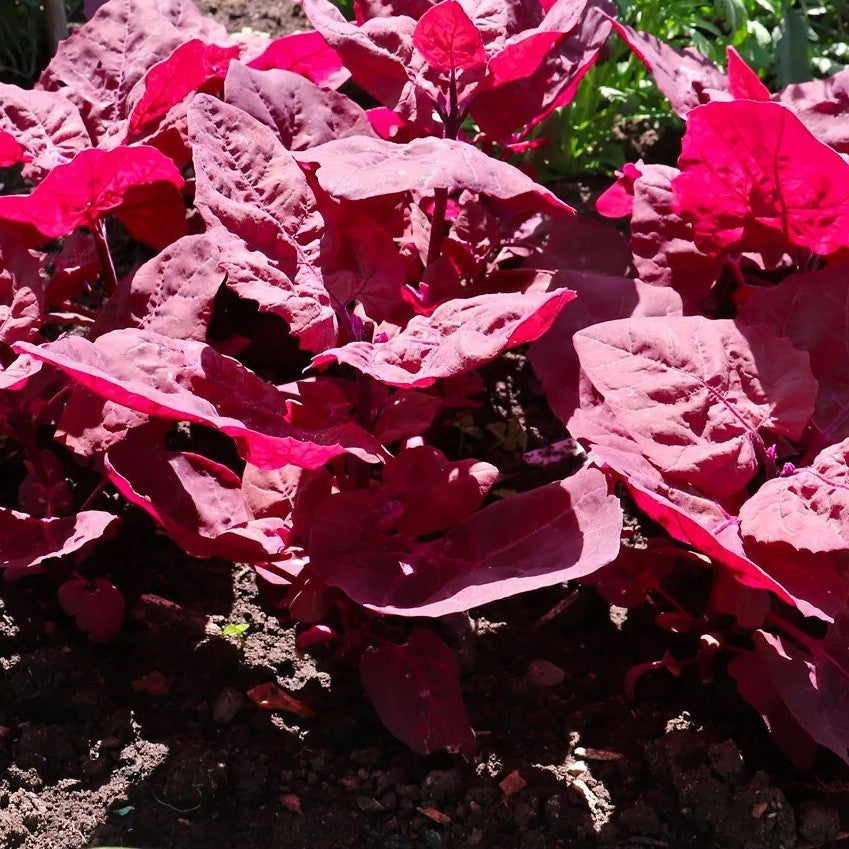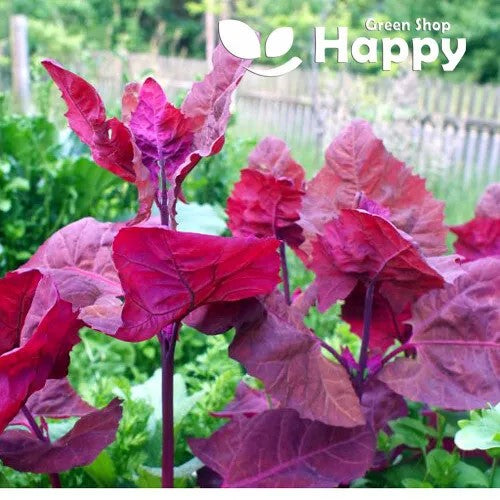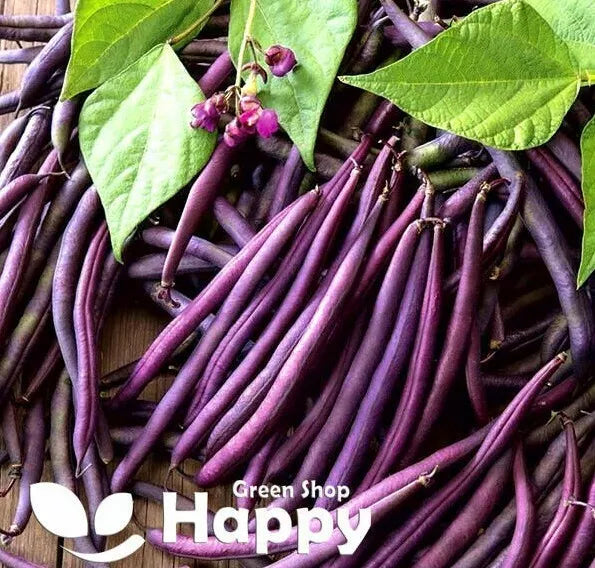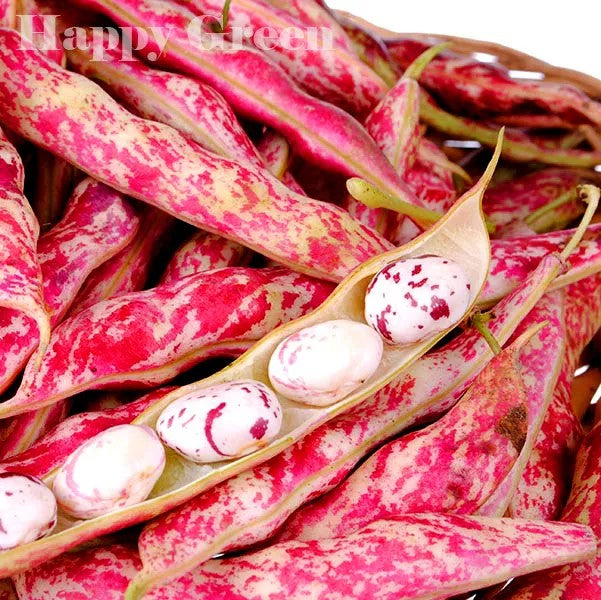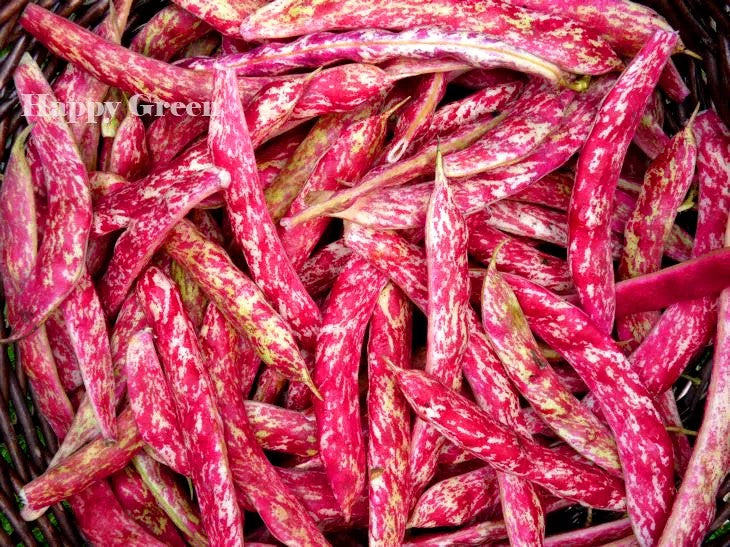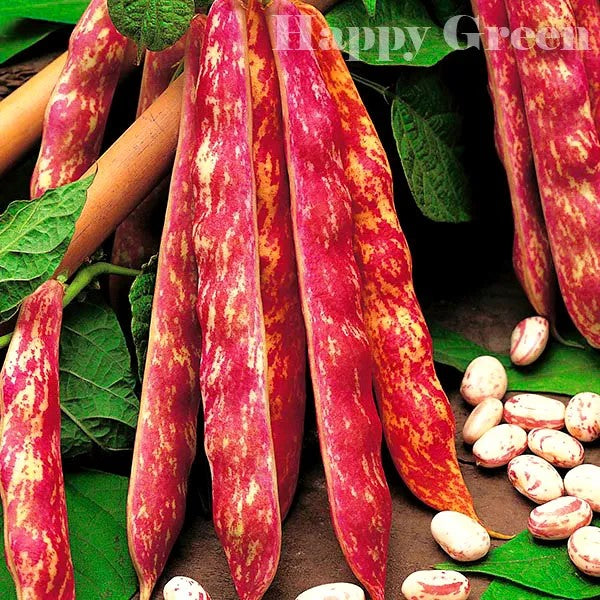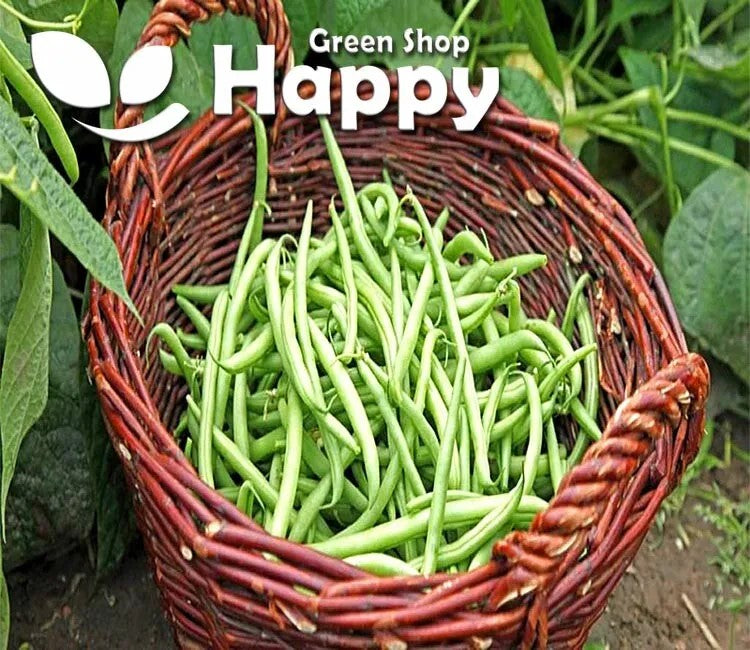Sort by:
190 products
190 products
Kale 'Red Russian' Seeds (Brassica oleracea)
Bring color and nutrition to your garden with Kale 'Red Russian', a hardy variety with tender, oak-shaped leaves flushed with purple-red veins. Sweeter and milder than many other kales, it’s perfect for salads, smoothies, steaming, and stir-fries. Cold-hardy and easy to grow, it thrives from early spring to late winter, providing a long season of nutrient-rich harvests.
How to Grow
-
Sow indoors in early spring or direct outdoors from spring to mid-summer.
-
Prefers fertile, well-drained soil in full sun or partial shade.
-
Sow 1 cm deep in rows 45 cm apart.
-
Thin or transplant seedlings to 40–50 cm apart.
-
Harvest young leaves for salads or allow plants to mature for larger leaves.
Key Features
-
Attractive purple-red veined leaves with tender texture
-
Mild, sweet flavor compared to traditional kales
-
Cold-hardy and reliable through autumn and winter
-
Perfect for cut-and-come-again harvesting
-
Nutrient-rich superfood, high in vitamins and minerals
Ideal For
-
Fresh salads and smoothies
-
Stir-fries, soups, and steaming
-
Year-round kitchen gardens
-
Gardeners seeking hardy, reliable greens
Sowing
-
Best time: March to July
-
Depth: 1 cm
-
Row spacing: 45 cm
-
Plant spacing: 40–50 cm
-
Harvest: From 6–8 weeks after sowing
Quick Tip
-
Harvest young leaves regularly to promote fresh growth and sweeter flavor.
Italian Courgette 'Genovese' – Seeds (Zucchini Long Pale Green)
Italian Courgette 'Genovese' is a classic zucchini variety producing long, pale green fruits with tender flesh and a mild, delicate flavor. Ideal for grilling, steaming, roasting, or sautés, this high-yielding summer squash thrives in sunny gardens and produces a continuous harvest throughout the season. Perfect for fresh cooking and adding color and taste to your meals.
How to Grow
-
Sow seeds indoors from March to April or directly outdoors from April to June.
-
Plant 2–3 seeds per hole, 2–3 cm deep, thinning to the strongest seedling.
-
Space plants 60–90 cm apart in fertile, well-drained soil with full sun.
-
Water regularly and mulch to retain moisture.
-
Harvest fruits when young and tender for the best flavor.
Key Features
-
Long, pale green summer zucchini
-
Tender flesh with mild, delicate flavor
-
High-yielding and continuous harvest
-
Versatile for grilling, roasting, steaming, and sautés
-
Easy to grow in gardens, raised beds, and containers
Ideal For
-
Summer vegetable gardens and home allotments
-
Fresh cooking: sautéing, grilling, roasting, and steaming
-
Gardeners seeking prolific and reliable zucchini varieties
Sowing & Harvest
-
Sow: March to June
-
Spacing: 60–90 cm
-
Harvest: June to September
Quick Tip
-
Pick zucchinis when 15–20 cm long for the best flavor and texture; regular harvesting encourages continued production.
Iceberg Lettuce ‘Great Lakes 118’ Seeds (Lactuca sativa)
Grow crisp, refreshing heads with Iceberg Lettuce ‘Great Lakes 118’ (Lactuca sativa). This classic variety produces firm, compact, light-green heads with a crunchy texture, perfect for fresh salads, sandwiches, and burgers. Easy to grow and early-maturing, it’s ideal for vegetable gardens, raised beds, and continuous harvests.
How to Grow
-
Sow seeds directly outdoors from early spring to early summer, or indoors for transplanting.
-
Use fertile, well-drained soil in full sun to partial shade.
-
Sow seeds thinly and cover lightly with soil; keep moist until germination (7–14 days).
-
Thin seedlings to 25–30 cm apart for healthy head development.
-
Harvest heads when firm and fully formed, before they bolt.
Key Features
-
Firm, compact, light-green heads with crunchy texture
-
Early-maturing and easy to grow
-
Ideal for fresh salads, sandwiches, and burgers
-
Reliable and productive in temperate climates
-
Suitable for outdoor or protected cultivation
Ideal For
-
Vegetable gardens, raised beds, and allotments
-
Fresh salads, sandwiches, and burgers
-
Continuous harvest with succession sowing
-
Homegrown kitchen gardens
Sowing
-
Best time: Early spring to early summer outdoors or indoors for transplanting
-
Germination: 7–14 days
-
Spacing: Thin to 25–30 cm apart
-
Prefers full sun to partial shade and fertile, well-drained soil
Quick Tip
-
Sow in successive batches every 2–3 weeks to enjoy a continuous supply of crisp heads.
Hot Chilli Pepper ‘Koral’ Seeds (Capsicum annuum)
Add fiery flavor to your garden with Hot Chilli Pepper ‘Koral’ (Capsicum annuum). This compact, high-yield variety produces small, vibrant red fruits with intense heat, perfect for fresh use, drying, or culinary spice. Easy to grow in warm conditions, it’s ideal for home gardens, patios, and greenhouses.
How to Grow
-
Sow seeds indoors 8–10 weeks before the last frost.
-
Use well-drained, fertile soil in a warm, sunny location.
-
Sow seeds 0.5 cm deep and keep soil consistently moist.
-
Maintain a temperature of 22–25°C for optimal germination (10–14 days).
-
Transplant seedlings outdoors after all risk of frost has passed, spacing 30–40 cm apart.
-
Water regularly and provide support if necessary.
-
Harvest fruits when fully red and firm.
Key Features
-
Small, vibrant red fruits with intense heat
-
Compact, high-yield variety
-
Ideal for fresh eating, drying, or culinary spice
-
Easy to grow in home gardens, patios, and greenhouses
-
Adds color and heat to garden and kitchen
Ideal For
-
Vegetable gardens, patios, and containers
-
Culinary use, drying, and spice-making
-
Attracting pollinators and adding color to the garden
-
Homegrown hot peppers for fresh or preserved use
Sowing
-
Best time: 8–10 weeks before last frost indoors
-
Depth: 0.5 cm
-
Spacing: 30–40 cm apart outdoors
-
Prefers full sun, warm conditions, and fertile, well-drained soil
Quick Tip
-
Pinch young growing tips to encourage bushier plants and higher fruit yield.
French Spinach - Purple spinach baby leaf - 450 seeds (Atriplex hortensis Orach)
£1.15
Unit price perFrench Spinach - Purple spinach baby leaf - 450 seeds (Atriplex hortensis Orach)
£1.15
Unit price perFrench Spinach – Purple Spinach Baby Leaf Seeds (Atriplex hortensis, Orach)
Bring color and nutrition to your garden with French Spinach (Atriplex hortensis), also known as Orach. This fast-growing heirloom green produces striking purple-red baby leaves with a mild, spinach-like flavor. Perfect for salads, stir-fries, and garnishes, it’s a fantastic alternative to traditional spinach, especially in warmer weather when spinach tends to bolt. Easy to grow and beautiful in the garden, it’s both ornamental and edible.
How to Grow
-
Sow directly outdoors from spring through summer.
-
Prefers fertile, well-drained soil in sun or partial shade.
-
Sow thinly 1–1.5 cm deep in rows 30 cm apart.
-
Thin seedlings to 20–25 cm for mature plants, or harvest young as baby leaves.
-
Pick regularly to encourage fresh growth.
Key Features
-
Deep purple-red baby leaves with mild spinach flavor
-
Excellent heat tolerance, less prone to bolting
-
Can be harvested young or grown to full size
-
Dual-purpose: edible and ornamental
-
Easy to grow and highly productive
Ideal For
-
Baby leaf salads and gourmet mixes
-
Stir-fries, soups, and steamed greens
-
Gardeners in warm climates
-
Edible landscaping and colorful borders
Sowing
-
Best time: Spring through summer
-
Depth: 1–1.5 cm
-
Spacing: Thin to 20–25 cm apart
-
Grows best in sun or light shade
Quick Tip
-
Harvest young leaves frequently for the best flavor and to keep plants producing longer.
French Bean ‘Purple Queen’ Seeds (Phaseolus vulgaris)
Add vibrant color to your vegetable garden with French Bean ‘Purple Queen’ (Phaseolus vulgaris). This climbing variety produces glossy, deep purple pods that turn green when cooked, offering both visual appeal and tender, flavorful beans. Easy to grow and highly productive, it’s perfect for fresh eating, steaming, or freezing.
How to Grow
-
Sow seeds directly outdoors after the last frost or start indoors 4–6 weeks earlier.
-
Use well-drained, fertile soil in full sun.
-
Plant seeds 2–3 cm deep and 10–15 cm apart, with rows 40–50 cm apart.
-
Provide stakes or a trellis to support climbing growth.
-
Water regularly, especially during flowering and pod development.
-
Harvest pods when young and tender for best flavor.
Key Features
-
Glossy deep purple pods that turn green when cooked
-
Climbing, highly productive variety
-
Easy to grow and maintain
-
Ideal for fresh eating, steaming, or freezing
-
Adds vibrant color and interest to vegetable gardens
Ideal For
-
Vegetable gardens and allotments
-
Fresh harvest, cooking, and freezing
-
Climbing plant displays in garden beds
-
Homegrown culinary use
Sowing
-
Best time: After last frost outdoors or 4–6 weeks earlier indoors
-
Depth: 2–3 cm
-
Spacing: 10–15 cm apart, rows 40–50 cm apart
-
Prefers full sun and fertile, well-drained soil
Quick Tip
-
Regularly pick pods to encourage continuous production and vibrant color.
French Bean 'Ibiza' – Seeds (Phaseolus vulgaris)
The French Bean 'Ibiza' is a high-yielding, reliable variety producing straight, slender pods with excellent flavor and texture. Perfect for picking young and tender, these beans are stringless, smooth, and packed with vitamins, making them a staple for summer gardens. Suitable for outdoor growing or in polytunnels, this variety is loved by gardeners for its productivity and long harvest window.
How to Grow
-
Sow indoors from April for planting out after frost, or sow direct outdoors from May to July.
-
Sow seeds 4–5 cm deep, spacing 15 cm apart, in rows 40–50 cm apart.
-
Prefers well-drained, fertile soil in a sunny, sheltered spot.
-
Water regularly, especially in dry spells.
-
Pick pods regularly to encourage continuous cropping.
Key Features
-
Straight, stringless pods with excellent taste
-
Heavy cropping, long harvest season
-
Rich in vitamins A, C, and K
-
Suitable for fresh use or freezing
-
Compact habit, ideal for small gardens or allotments
Ideal For
-
Steaming, boiling, and stir-frying
-
Freezing for later use
-
Companion planting in vegetable gardens
-
Garden beds, raised beds, or containers
Sowing & Harvest
-
Sow: April to July
-
Depth: 4–5 cm
-
Spacing: 15 cm apart, 40–50 cm between rows
-
Harvest: July to September
Quick Tip
-
Harvest pods while young and tender for the best flavor. Regular picking boosts yield.
French Bean 'Borlotto Lingua di Fuoco Nano' – Seeds (Phaseolus vulgaris)
The Borlotto Lingua di Fuoco Nano (Dwarf Firetongue Bean) is a stunning variety of French bean, prized for its vibrant red-streaked pods and delicious, creamy beans. Compact and easy to grow, this dwarf type requires no staking, making it ideal for smaller gardens, allotments, and containers. Both pods and shelled beans can be enjoyed fresh or dried for winter use.
How to Grow
-
Sow seeds outdoors from late May to July after the last frost.
-
Plant 3–5 cm deep, 15–20 cm apart, in rows 45 cm apart.
-
Prefers fertile, well-drained soil in full sun.
-
Keep soil moist but not waterlogged.
-
Harvest pods when young for eating fresh, or allow to mature for drying.
Key Features
-
Striking red-streaked pods with creamy beans inside
-
Dwarf habit – no staking required
-
Delicious fresh or dried for storage
-
High-yielding and reliable cropper
-
Compact plants perfect for small spaces
Ideal For
-
Kitchen gardens and allotments
-
Container growing
-
Traditional Italian dishes
-
Freezing or drying for winter use
Sowing & Harvest
-
Sow: May to July
-
Depth: 3–5 cm
-
Spacing: 15–20 cm
-
Harvest: July to September
Quick Tip
-
For the best flavor, harvest pods while still slightly immature, or let them mature fully for drying and storing.
French Bean ‘Blue Lake’ Seeds (Phaseolus vulgaris)
Harvest crisp, tender beans with French Bean ‘Blue Lake’ (Phaseolus vulgaris). This classic variety produces long, uniform, deep green pods ideal for fresh eating, steaming, or freezing. Easy to grow and highly productive, it’s perfect for vegetable gardens, allotments, and homegrown cooking.
How to Grow
-
Sow seeds directly outdoors after the last frost or start indoors 4–6 weeks earlier.
-
Use well-drained, fertile soil in full sun.
-
Plant seeds 2–3 cm deep and 10–15 cm apart, with rows 40–50 cm apart.
-
Support climbing varieties with stakes or a trellis if needed.
-
Water regularly to keep soil moist, especially during flowering and pod formation.
-
Harvest pods when they are young, tender, and well-filled.
Key Features
-
Long, uniform, deep green pods
-
Highly productive and easy to grow
-
Ideal for fresh eating, steaming, or freezing
-
Hardy and reliable in temperate climates
-
Perfect for vegetable gardens, allotments, and homegrown cooking
Ideal For
-
Vegetable gardens and allotments
-
Fresh harvest, steaming, and freezing
-
Companion planting with nitrogen-fixing crops
-
Homegrown culinary use
Sowing
-
Best time: After last frost outdoors or 4–6 weeks earlier indoors
-
Depth: 2–3 cm
-
Spacing: 10–15 cm apart, rows 40–50 cm apart
-
Prefers full sun and fertile, well-drained soil
Quick Tip
-
Pick pods regularly to encourage continuous production throughout the season.
Showing 126/190


